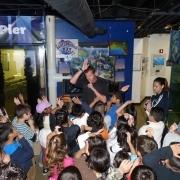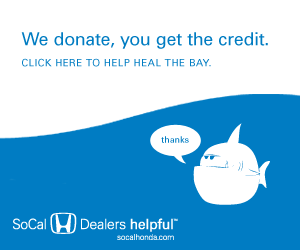Yesterday, the Santa Monica Pier Aquarium, the west end of the Santa Monica Pier and surrounding beach lots were closed due to the Tsunami Advisory (canceled at 8:20am today) issued for the Southern California coast due to the 8.9 earthquake in Japan.
Tsunami Advisory Info
- A Tsunami Advisory was in effect for the coastal areas of California from the California-Mexico border to Point Concepcion, California.
- A Tsunami Advisory means that a tsunami capable of
producing strong currents or waves dangerous to persons in or very near
the water is expected.- Significant, widespread inundation
is not expected for areas
under an advisory. Currents may be hazardous to swimmers, boats,
and coastal structures and may continue for several hours after the
initial wave arrival.
Japan Earthquake Info
- At 9:46 PM Pacific Standard Time on March 10, an earthquake with
preliminary magnitude 8.9 occurred near the east coast of Honshu, Japan. (Refer to the United States Geological Survey for official earthquake parameters.)- This earthquake has generated a tsunami which could
cause damage to coastal regions in a warning or advisory.
Estimated tsunami arrival times and maps along with safety rules and other information can be found on the WCATWC web site.
The Aquarium staff worked closely with Santa Monica Harbor Patrol to monitor the situation and get up to date guidance and information.
As such the following changes were made to yeasterday’s Aquarium schedule:
- Public hours: 12noon – 5pm today (Friday, May 11)
- Two field trips that were scheduled for Friday were cancelled.
Note: regular Aquarium public hours resume today, Saturday, May 12.
Other tsunami-related updates during Friday, May 10, for Santa Monica:
- Updated 12noon: Beach parking lots were reopened.
- Updated at 4pm: While swimmers are being warned about potential
strong currents, the police are no longer cautioning people to stay away
from the beach or the pier. - Updated at 4pm: The Santa Monica Pier reopened
Friday afternoon, with pedestrians and cars streaming down the bridge.
The tsunami advisory is still in effect in Santa Monica, according to
NOAA. - Follow general observances and updates at Santa Monica Patch.





